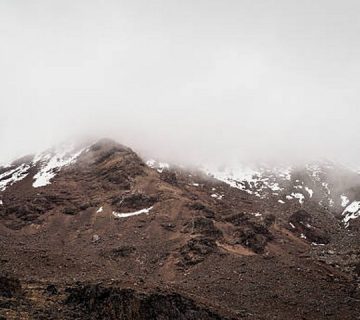Conquering Kilimanjaro: Altitude Sickness Tips to Reach the Roof of Africa
As you dream of standing atop the snow-capped peak of Mount Kilimanjaro, the tallest mountain in Africa, it’s vital to prepare not only your body but also your mind. Among the various challenges that climbers face, altitude sickness is a significant one, but with the right strategies, it can be managed effectively. Here at the Kilimanjaro Centre for Trekking and Ecotourism (KCTE), we are committed to ensuring that your journey to the summit is as exhilarating and safe as possible. This post will guide you through essential tips to prevent and combat altitude sickness, helping you make the most of your incredible adventure.
Understanding Altitude Sickness
Altitude sickness, also known as acute mountain sickness (AMS), can occur when you ascend too quickly to high elevations. The air at higher altitudes has less oxygen, which can cause symptoms like headache, nausea, dizziness, and fatigue.
Why it’s Crucial to Prepare
Kilimanjaro’s peak, Uhuru Peak, stands proudly at 5,895 meters (19,341 feet) above sea level. Climbing Kilimanjaro presents a real challenge, particularly when it comes to adapting to the thin mountain air. Preparing for the altitude is not just about enhancing your experience; it’s about safety. By understanding and preparing for altitude sickness, you significantly increase your chances of a successful, enjoyable trek.
Pre-Climb Preparation
1. Get Fit, Stay Fit
A well-conditioned body copes better with the stresses of high altitude. Engage in a fitness regimen that includes cardiovascular exercises like running, swimming, or cycling to boost your stamina and lung capacity.
2. Practice Hikes
Engage in several practice hikes to familiarize your body with prolonged physical exertion. If possible, include some high-altitude locations in your practice runs.
3. Consult Your Doctor
Before embarking on your trip, have a consultation with your healthcare provider. Discuss the trip’s specifics and any preventive medications for altitude sickness like acetazolamide.
On the Mountain: Strategies to Mitigate Altitude Sickness
Climb Slowly
The golden rule for high-altitude trekking is to ascend slowly. The recommended ascent is no more than 500 meters (1,640 feet) per day once you are above 3,000 meters (9,842 feet).
Stay Hydrated
Dehydration is a known contributor to altitude sickness. Drink at least four to six liters of water daily to keep your body hydrated and better able to cope with the altitude.
Eat Well
Your body needs more fuel in high-altitude conditions. Consume a balanced diet rich in carbohydrates; they are easier to metabolize at higher elevations and provide sustained energy.
Listen to Your Body
Recognize the symptoms of altitude sickness early. If you feel dizzy, have a headache, feel nauseous, or unusually tired, communicate this to your guide immediately.
Acclimatization Days: Why They Are Key
Incorporating acclimatization days into your trek can greatly improve your adjustment to high altitude. These are rest days, typically spent at a constant elevation where you can take short walks to higher altitudes then return to a lower one to sleep. This process helps stimulate your body’s response to the reduced oxygen levels.
Choosing the Right Route
Selecting an appropriate route is critical for acclimatization. At KCTE, we recommend the Lemosho or Machame routes for their longer itineraries that allow for gradual acclimatization. These routes provide scenic diversity and better adaptation opportunities, significantly reducing the risks of altitude sickness.
When to Descend
If symptoms of altitude sickness worsen and become severe, the safest and most effective treatment is to descend immediately. Safety is paramount, and our experienced guides at KCTE are trained to make these critical decisions swiftly to safeguard your health.
Why Choose KCTE for Your Kilimanjaro Adventure?
Choosing the right tour operator is as important as preparing for altitude sickness. At Kilimanjaro Centre for Trekking and Ecotourism, we pride ourselves on providing expert guidance, comprehensive climb preparation, and dedicated support. Our knowledgeable and experienced guides are committed to ensuring your journey is not only successful but also unforgettable.
FAQs About Climbing Kilimanjaro
What is the best time of year to climb Kilimanjaro?
The best times to climb Kilimanjaro are during the dry seasons: January to mid-March and June to October.
How long does it take to climb Kilimanjaro?
It typically takes about 5 to 9 days, depending on the route and your speed of ascension. We recommend the 7 to 8-day routes for better acclimatization.
What should I pack for my Kilimanjaro trek?
Essential items include thermal clothing, a sturdy pair of hiking boots, a sleeping bag suitable for sub-zero temperatures, sunglasses, sunblock, a hat, and a daypack. Don’t forget your camera to capture the breathtaking views!
Can beginners climb Kilimanjaro?
Yes, beginners can climb Kilimanjaro. However, adequate physical preparation and choosing a suitable route are crucial for a successful summit.
Conclusion: Your Journey Awaits
Embarking on a trek to the summit of Kilimanjaro is a journey of a lifetime. By understanding and preparing for the challenges of high altitude, particularly altitude sickness, you are setting yourself up for success. At KCTE, we are dedicated to making your adventure safe, enjoyable, and successful.
Ready to stand on the roof of Africa? Book your Kilimanjaro climbing adventure with Kilimanjaro Centre for Trekking and Ecotourism today and take the first step towards a truly transformative experience. Together, let’s reach new heights!
Remember, the summit is within reach, and every step you take is a step towards achieving your dreams. Join us and conquer Kilimanjaro!




